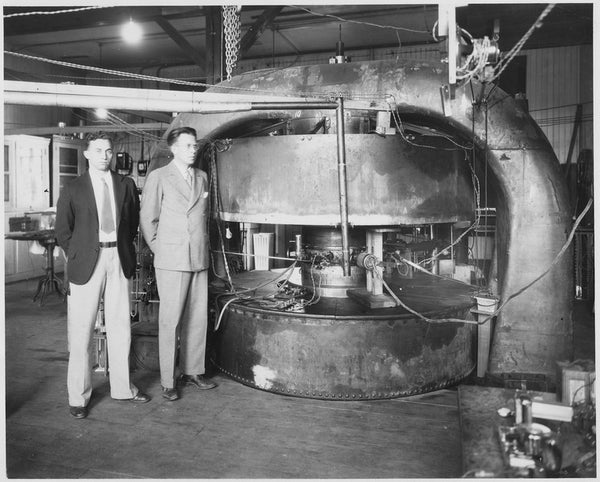This article was published in Scientific American’s former blog network and reflects the views of the author, not necessarily those of Scientific American
Particle physics is incredible—an awe-inspiring combination of ambitious research and technical skill. Theorists have built a picture of our universe at the smallest scale, and experimentalists have devised the most ambitious experiments to probe this infinitesimal world.
Their successes have led to the Standard Model, a staggeringly successful theory and the most complete understanding of nature we have, which explains almost everything we observe in terms of a handful of numbers, particles, and forces.
Modern particle physics is a triumph of humanity’s best qualities: creativity, curiosity, and collaboration.
On supporting science journalism
If you're enjoying this article, consider supporting our award-winning journalism by subscribing. By purchasing a subscription you are helping to ensure the future of impactful stories about the discoveries and ideas shaping our world today.
The field’s crowning achievement, the Large Hadron Collider at CERN, is the biggest, most complex terrestrial experiment in history. It cost $10 billion to build, is 17 miles in circumference, and straddles two countries. Its superconducting magnets, proton beam, and sheer power are engineering marvels. There are as many as 13,000 brilliant people working at CERN on any given day.
Without question, the LHC is the signature scientific machine for particle physics of my generation. The discovery of the Higgs boson—a particle predicted by theory a half-century earlier—was one of history’s great scientific achievements.
But there is a problem. The LHC is reaching its energy limits, and it will take roughly 30 years to build the next great collider. That number is conservative, given the enormous complexities and costs involved. It also happens to be the approximate lifespan of an academic career.
Can we really expect an entire generation of young minds to sit on the sidelines waiting for the next experiment to be built? More importantly, should we?
For a decade, particle physicists have thought about what comes next. How we should address the many gaps in our knowledge? What is the nature of dark matter? What is our universe really made of and how does it work? Why is the universe so large? Why is gravity so weak? Physics is far from finished.
I think we should look to our past for the answer.
The first particle accelerators were built in the early 1930s. John Cockroft and Ernest Walton used a 200-kilovolt transformer to accelerate protons down a tube just eight feet long. Ernest Lawrence realized that if the tube were made circular, and particles were kept moving, they would accelerate to much higher energies. His first “cyclotron” was four-and-a-half inches in diameter.
In its early days, particle physics was a dynamic, fast-moving interaction of theory, inspiration, calculation, engineering, and tinkering. Everything went into the mix, and each spectacular success built support for the next leap forward, further galvanizing public support for big science in the 20th century.
The age of accelerators was enormously successful, and I believe it will be again, but in the interim we should return to our roots.
Over the last 40 years, a number of well-motivated, important theoretical ideas have developed, but have not yet been tested experimentally—not because they are unworthy, but because we have focused on high energy experiments. These ideas imply the existence of new dimensions of space, new forces in nature, and new fundamental constituents of matter. They are ideas of great importance that cannot be tested by simply going to higher and higher energies.
While we have focused on supersized particle accelerators, modern technology has opened a new frontier, heralding the era of high-precision particle physics. These technologies can be employed in small, precise experiments that can look for a broad range of new phenomena. These experiments can fit on a table top, require 10 people rather than 10,000, and cost a few hundred thousand dollars, rather than the billions required for a supercollider like the LHC.
We are on the verge of a renaissance in table-top particle physics experiments.
Over the last decade or so, a number of smart, ambitious young theorists have begun to think seriously about applying new technologies to previously overlooked areas.
Three of them—former students of mine, I am very proud to say—have just been awarded the prestigious Breakthrough New Horizons Prize: Asimina Arvanitaki (The Stavros Niarchos Foundation Aristarchus Chair at Canada's Perimeter Institute), Peter Graham (Assistant Professor at Stanford University) and Surjeet Rajendran (The Henry Shenker Assistant Professor at UC Berkeley).
I see the award as further validation that these young scientists are pushing the field in important new directions.
As a former teacher of these brilliant young people, I am brimming with pride. As a theorist who waited decades to test my work at the LHC, I see three bright lights who can help us avoid a “lost generation” in particle physics.
I hope that this newly awarded research is further embraced with the same excitement and dynamism that characterized the early days of particle physics.
If this comes to pass, the coming decades will be an exciting time to be a particle physicist—and, by extension, an exciting time for human inquiry into the nature of it all.
Savas Dimopoulos is the Hamamoto Family Professor in the School of Humanities and Sciences at Stanford University and the Archimedes Distinguished Visiting Research Chair at Perimeter Institute in Waterloo, Canada. His research in particle physics spans four decades.
